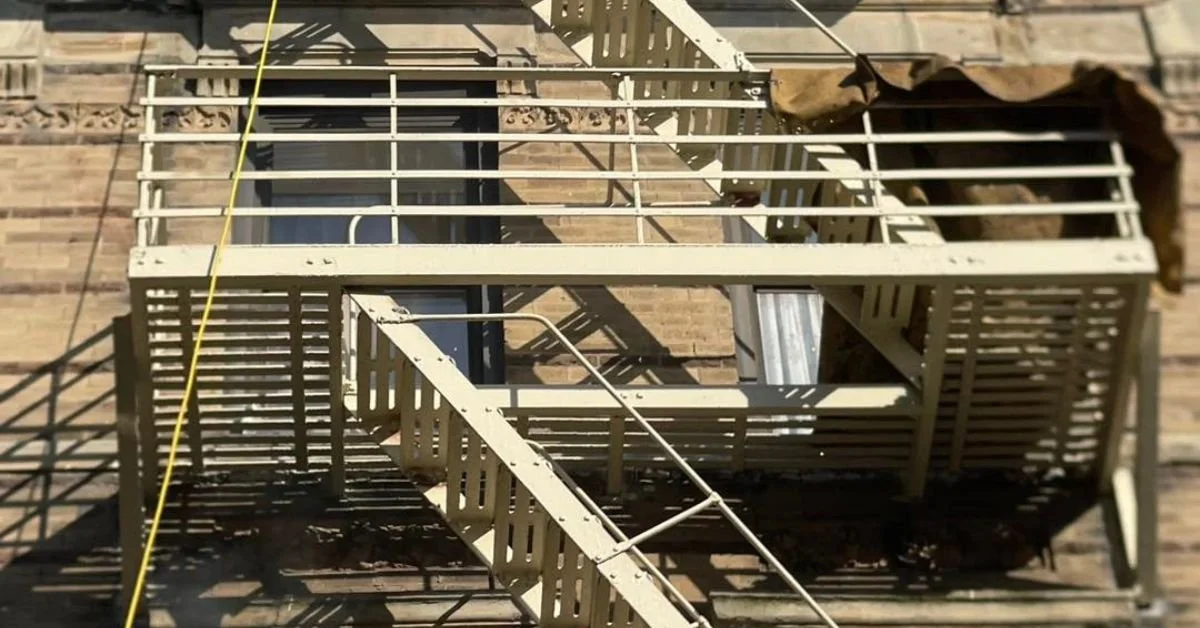Exploring Different Alternatives To Obtaining a Fire Escape Load Test Certificate
Building owners and property managers bear numerous responsibilities, with fire escape maintenance being a top priority. A fire escape that is structurally sound ensures a safe exit for occupants in emergencies. Traditionally, load tests have been used to verify this stability. However, assessment techniques have advanced over time. Knowing these methods helps property managers make better-informed decisions regarding their buildings.
A fire escape, often over a century old, is constantly exposed to the elements. This exposure leads to corrosion and wear, which can compromise the material's structural integrity. Regular evaluations are necessary to identify and address these issues before they become serious hazards.
Keep your property safe by exploring these three different methods for obtaining fire escape load test certifications to ensure compliance and safety.
The Importance of Regular Inspections
Fire escapes are exposed to harsh weather and environmental factors that can cause wear and tear over time. Inspections play a key role in catching these issues early, ensuring they don’t compromise safety.
By addressing problems promptly, you can avoid costly repairs in the future while maintaining compliance with safety standards. Proactive maintenance is essential for preserving both the functionality and longevity of fire escapes.
Why Conventional Load Tests Are No Longer Standard Practice
Previously, testing a fire escape’s strength typically involved applying a physical load, such as placing sandbags, water weights, or other heavy objects on the platforms and treads to mimic the weight of people. The aim was to ensure the structure could support the designated weight without collapsing.
However, many older fire escapes have hidden weaknesses caused by years of corrosion. Putting hundreds or thousands of pounds of weight on a potentially weakened structure can lead to a catastrophic failure. Such failure damages the fire escape and the building and poses a severe danger to the personnel conducting the test and anyone nearby. Due to these safety concerns and the existence of more advanced evaluation methods, conventional load testing is no longer the preferred approach for assessing fire escape integrity.
Modern Approaches To Structural Assessment
Current fire escape evaluations focus on non-destructive methods that provide a thorough understanding of the structure's condition without applying excessive stress. These techniques enable professionals to pinpoint potential failure points with precision, ensuring safety without compromising damage. This shift towards smarter, less invasive diagnostics reflects advancements in engineering and material science.
Thorough Visual Examination
A detailed visual examination by a qualified professional is the first step in any modern assessment. This process goes far beyond a casual glance, requiring an expert eye to detect subtle but critical flaws. Inspectors look for specific signs of deterioration that indicate underlying structural problems and document every observation for a comprehensive report.
Key areas of focus include:
Corrosion and rust: Inspectors check for signs of rust, especially at connection points, underneath treads, and where the fire escape attaches to the building. Flaking or scaling of metal indicates active corrosion, which weakens the structure.
Connections and fastenings: All connections are meticulously checked. This includes the points where the fire escape mounts to the building, as well as the connections between platforms, stairs, and handrails. Professionals look for loose or deteriorated connections that could compromise stability.
Structural deflections: Any sagging or bending on the platforms or stairs is a major red flag. Inspectors use leveling tools to detect deflections that might not be obvious to the naked eye.
Paint and coatings: The condition of the paint offers clues about the maintenance history and underlying metal. Blistering, peeling, or cracked paint allows moisture to reach the metal, accelerating corrosion.
Nondestructive Testing (“NDT”)
Nondestructive Testing encompasses several techniques that evaluate the properties of a material or component without causing damage. For fire escapes, nondestructive testing provides a safe and effective method for assessing structural health.
Ultrasonic Thickness Measurement
Ultrasonic thickness measurement uses high-frequency sound waves to measure the thickness of metal components. An inspector places a small probe on the surface of the fire escape and the device sends a sound wave through the metal. The time it takes for the wave to bounce back indicates the material’s thickness. This method accurately detects metal loss due to corrosion, even on surfaces where the damage is not visible.
Structural Analysis From Certified Professionals
Instead of applying a physical load, a certified engineer or qualified professional can perform a structural analysis. This assessment involves things such as:
Taking detailed measurements of all fire escape components.
Identifying the material types used in the fire escape’s construction.
Using engineering principles and software to calculate the structure's load-bearing capacity based on its current condition, including any observed corrosion or wear.
This analytical approach provides a comprehensive safety assessment without the risks associated with physical load testing. It determines if the structure meets safety standards and identifies specific areas that require reinforcement or repair.
For property owners and managers, this means understanding the condition of a fire escape through scientific evaluation rather than a high-risk physical inspection.
Legal Compliance and Safety Standards
Fire escapes must adhere to local building codes and safety standards to ensure they function as intended in emergencies. Failure to comply with these regulations can result in fines, legal liabilities, or worse, compromised safety during critical situations. Property owners and managers should prioritize inspections and repairs to maintain compliance and the overall safety of occupants.
Repair and Reinforcement Strategies
When issues such as corrosion or structural instability are detected, implementing appropriate repair and reinforcement strategies is essential. Solutions can range from replacing damaged components to applying protective coatings that shield against further weathering. Advanced techniques, such as the use of corrosion-resistant materials, also help extend the lifespan of the structure while maintaining its reliability.
Benefits of Preventive Maintenance
Investing in preventative maintenance ensures your fire escapes remain functional and ready for emergency use. This approach ultimately prioritizes occupant safety and proves cost-effective for property management in the long run.
Benefits of preventive maintenance include:
Enhanced longevity of fire escapes.
Reduced long-term costs of extensive repairs.
Proactive discovery of potential weaknesses.
Prioritization of occupant safety.
Cost-effectiveness for property management.
A Path Forward for Fire Escape Safety
The shift away from conventional load testing toward advanced, non-destructive evaluation methods represents a positive development in property safety. Building owners and managers can now obtain a more accurate and detailed assessment of their fire escapes without exposing their property or personnel to unnecessary danger. Exploring different alternatives to fire escape load tests leads to safer, more informed maintenance decisions. To maintain compliance and safety, schedule a professional fire escape inspection to assess the condition of your structure.



